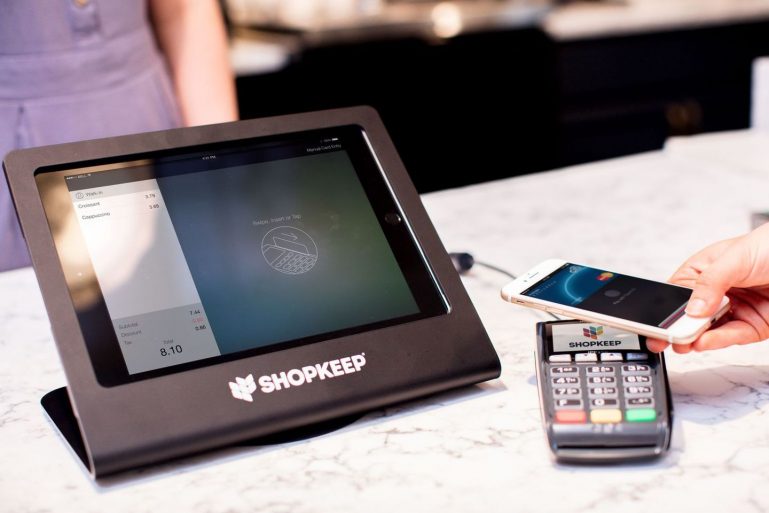
Choosing the Best Point of Sale Equipment for Your Business
While most people think of the hardware components when purchasing a point of sale (POS) system, a POS is more than monitors, cash register drawers and other essential equipment.
One of the keys to choosing the right point of sale equipment is understanding your unique business needs. From there, you can invest in the appropriate combination of POS hardware and POS software to improve your day-to-day operations.
Luckily, this process is relatively straightforward, but if you’re not familiar with the options available to you, you’ll end up with a subpar pos solution that’s detrimental to your business. This post can help.
POS Software vs. Hardware: Which is King?
The short answer is both. Combined, they make up the critical components of a POS system. On the surface, most point of sale systems promise merchants the same basic functionality: The ability to accept payments, track sales, manage inventory, and keep track of customer data.
When choosing a point of system you want to ensure that the software is intuitive. Your POS software should be designed in a way that minimizes disruptions in workflow, simplifies the checkout experience.
Your hardware should compliment this experience. POS equipment is an essential component in your system setup. Opting for a POS software provider that offers both proprietary and open source hardware, provides you with the most freedom and flexibility which ultimately results in the most bang for your buck. To learn more about this, download our free Choosing a POS System Guide.
What Kind of POS System Should a Business Owner Look For?
When it comes to choosing a POS, a business owner needs to keep their goals in mind. What are you looking to gain out of your POS system? What kind of functionality does your POS need to have to fulfill your needs? A POS system needs to keep up with your operational requirements. When making a choice, know that you have two options: a traditional POS and a cloud-based system.
Traditional POS systems are often used in large chain department stores and grocery stores. These look like full-scale computers that sit on top of their cash drawers. They’re typically a hassle to set up because you’ll need your POS vendor to come by and install everything. That could easily take hours out of your day, and there’s no way for your business to operate if you have no POS.
Then, for the POS terminals, you’re going to need things like a cash drawer, barcode scanner, credit card reader, and receipt printer. With traditional systems, these items are proprietary, and that is going to make them more expensive than a cloud POS. Plus, POS terminals have to be individually installed, and that could leave the doors to your business closed for a few hours if the installation goes well.
On the other hand, cloud-based POS software has a much quicker installation process. It can run on an iOS or Android tablet which makes it a good option if you’re a business owner who likes to stay on their feet and interact with your customers. The mobility of this modern kind of system allows you to check out customers from wherever they are in your store and means you aren’t stuck behind a desk every second of the day.
SEE ALSO: Essential Tips On How To Choose A Retail POS System
What POS Hardware Do I Need?
Your POS software may be able to run on a tablet, but you’re going to need more than that to complete a sale. The way your terminal is set up can make the checkout process that much smoother for yourself and your customers. To complete your POS terminal, you will need the following point of sale equipment:
Tablet: Your software has to run on something and tablets give you the most portability along with function. You have a choice between iPads and Android devices. iPads can also be encased in a stand. Stands can be useful if you’re running a business where your tablet will be moving around. But stands can also be secured to a countertop.
Credit Card Reader: Lots of customers pay with credit cards but with new technology comes different ways to use credit cards. Many cards now use EMV chips that customers have to insert into a credit card terminal to pay. Other cards and smartphone technology are taking advantage of Near Field Communication (NFC) as a payment option. This means all customers have to do is tap their cards or phones onto a compatible device for you to accept payments. Make sure you look into each of these options and determine which ones will be best for your target audience.
Receipt Printer: Although email receipts are increasing in popularity, printed options are still favorable amongst consumers. Let them choose and make sure your printer also has paper.
Kitchen Printer: The food industry has different needs than retail businesses, and one of those is clear communication between the front and back-of-house. Avoid a POS system that makes you print a ticket that you bring to a kitchen window and instead, choose one that prints directly into the kitchen as soon as a food order is placed.
Barcode Scanners: Typing in each UPC code when a customer checks out is slow and increases the chances a mistake will be made. Barcode scanners give business owners and staff the peace of mind that they need to make sure transactions are completed correctly. Bluetooth scanners give you free rein of motion and can be connected to your POS so that everything you scan goes directly into the software.

Cash Register Drawer: Cash isn’t dead yet. About 24% of all U.S. citizens still make their purchases solely through cash. Giving your customers the option to pay that way can be good for business. Cash drawers are an essential component in preventing loss from both the public and employees. Make sure your drawer is facing away from the customer and that there is a separate section for bigger bills. It’s also vital that the drawer locks and that only authorized staff and managers have access to its key.
SEE ALSO: The Beginners Guide to Restaurant POS Hardware
How Much Will POS Equipment Cost?
Modern POS system costs are much less than their traditional counterparts, especially in the long run. With setting up hardware and software, you’ve already spent a few thousand dollars. Add onto that the cost of yearly maintenance and software updates, and you can easily spend up to $50,000 annually. And that price could be what you pay per POS terminal.
Cloud-based systems are much less expensive with the software typically being a low monthly fee with free updates. You also don’t have to pay an extra fee for maintenance since your POS vendor doesn’t have to stop by your business every time you have a problem. Many modern systems also give their customers 24/7 customer service that’s much more responsive than the service offered by traditional systems.
Software costs aside, here is a list of typical POS hardware components and their cost:
- Tablets: $500-$1,000
- Credit Card Readers: $50-$150
- Receipt Printers: $150-$400
- Barcode Scanners: $50-$500
- Cash Drawers: $50-$200
These peripherals usually require a one-time, upfront investment. You’d only have to pay for these items again if something malfunctions or breaks.
One of the advantages of choosing a cloud-based POS system is that it is compatible with a variety of POS hardware. This allows for more flexibility in terms of cost and customizing your setup to meet your business needs. Read on for a few popular POS solutions to choose from.
Choosing A POS System
The main issue with choosing point of sale software and hardware is that there are so many options to choose from. Here are some to consider:
ShopKeep
ShopKeep is a cloud-based POS solution that gives merchants the ease-of-use they’re looking for. Its modern interface is easy to use and understand. Its software downloads quickly, and there’s 24/7 support through multiple channels in case any issues arise. Retailers can even keep track of what goes on in their stores in real-time with the help of BackOffice and ShopKeep Pocket.
ShopKeep offers a variety of plans based on a merchant’s specific business needs. However, the average customer can get started for as little as what you pay for a daily cup of coffee.
Square
Square is a solution designed for micro-merchants that allows anyone with a reader to accept payments quickly. They recently expanded their offerings to include a retail POS system. However, their fee structure makes it a less attractive solution for merchants with higher average transaction sizes.
Square takes between 2.7% and 2.5% plus 10 cents in processing fees for each transaction. Depending on your average ticket size, this can cut deep into your profits over time.
SEE ALSO: How Is ShopKeep Different From Square?
Clover
Similar to ShopKeep and Square, Clover is a cloud-based solution that also supports web-based systems. Clover’s pricing model consists of a monthly subscription fee, as well as a percentage of each transaction and any monthly recurring costs for the use of paid apps listed in the Clover marketplace.
Clover and ShopKeep have an integrated solution that allows merchants to take advantage of the ShopKeep’s intuitive, #1-rated POS software with The Clover Mini, an all-in-one credit card reader, and printer designed for retailers.
Want to try ShopKeep for yourself?
Just answer a few easy questions.
Need help finding the right point of sale?
Just complete the form. We’ll call you right back to explain how ShopKeep can work for you.
Hit the ground running.Sprinting, in fact!
Read our free, comprehensive guide, Small Business 101, to learn all you need to know about starting a thriving business.

